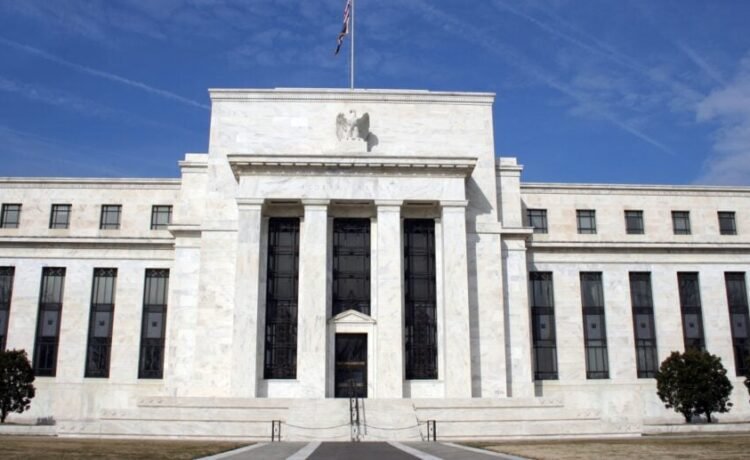How You Can Take Full Advantage of the Federal Rate Cut

A few months ago, slowing down the nation’s rate of inflation seemed insurmountable for the Federal Reserve Bank. Now that inflation is at 2.5% and the Fed announced a sizable half-point rate cut on Sept. 18, inflation has continued to slow to such an extent that another large rate cut is being discussed.
For the real estate industry, such news, after two years of despair amid post-COVID rate hikes, is like having a birthday and holiday season arrive in quick succession. The question for many investors is how best to take full advantage of the rate cuts.
Mortgage rates have already dropped in the wake of the first Fed rate cut and are expected to keep their downward trajectory through 2025, should rate cuts continue. The movement is “reviving purchase and refinance demand for many consumers,” Freddie Mac chief economist Sam Khater said in a statement.
Fed chairman Jerome Powell told the National Association for Business Economics in prepared remarks on Sept. 30:
“Looking forward, if the economy evolves broadly as expected, policy will move over time toward a more neutral stance. But we are not on any preset course. The risks are two-sided, and we will continue to make our decisions meeting by meeting.”
Don’t Expect a Dramatic Change in Rates
Though welcome, don’t expect mortgage rates to fall dramatically beyond their current rate of around 6%. That’s because the Fed’s recent move was mostly baked into the current rate, so further cuts will be needed to continue moving the needle. In addition, mortgages tend to be influenced by, rather than move in tandem with, the Fed’s actions.
“Long-term mortgage rates will fall if economic data indicates a weakening economy,” said Melissa Cohn, regional vice president of William Raveis Mortgage, a mortgage lender in Shelton, Connecticut. “Employment numbers will be key.”
The Fed rate cut affects the rates that banks charge each other overnight. In turn, a host of different short-term rates are reflected in the prime rate, which ultimately filters down to real estate. Real estate is also affected by long-term bonds, particularly the 10-year Treasury yield.
Refinancing
For homeowners or investors forced to buy or refinance at high rates over the last couple of years, a refinance to almost two points lower will bring some much-needed relief. The decision to refinance now or wait differs from buyer to buyer, depending on your plans for your property.
If you plan to stay or keep your property long enough to recover closing costs and other fees— about 2% to 3% of the loan amount—it might make sense to refinance now and benefit from lower monthly payments. When banks offer no- or low-cost refinances, it often results in higher rates, and the fees will be added to the loan cost.
Ruth Bonapace, a senior mortgage loan officer at US Bank, told BiggerPockets that she offers this lending advice to borrowers who are unsure about refinancing:
“If you think there might be another rate drop in the near future and you want to lower your payment now but don’t want to risk paying closing costs twice, then you can often have the lender cover the costs in the form of a sizable lender credit. You won’t get the rock-bottom rate because the lender has to build in that cost. But it is a stepping stone, almost a no-brainer, to just lower your payment for as long as it takes until you can step down again.”
“In general, the larger your mortgage, the more likely this scenario makes sense. Why? Most closing costs are not tied to the loan amount.”
Bonapace illustrates a common scenario:
“A borrower with a 7% rate wants to lower it to a new rate of 6% on a $200,000 mortgage with zero discount points. Did you know that if you wanted the lender to cover $2,000 of the $5,000 in closing costs, the rate would probably go up to 6.25% for that rebate, and the closing costs you pay would be $3,000? (The one point equal to a quarter-percent off the rate is meant for illustration purposes only and can vary, but it is typical for most 30-year fixed mortgages. Closing costs likewise vary.)
“Now, if your loan amount is $600,000, for the 6.25%, you get $6,000, covering all costs in this scenario. So you’ve effectively got a free refi, and if you do it again in a few months, you won’t have to incur costs twice. With a $1 million mortgage, the rate might only go from 6% to 6.125% because you might only need a half point to cover the costs.
Some banks and nonbank mortgage companies advertise “no-cost” refinances. It’s the same concept, and the ads make the phone ring. But just about any experienced loan officer will know how to do this and can explain it in more customized detail than we can here. It’s worth asking.
Bonapace stresses that closing costs on a refi are usually lower than on a purchase, as borrowers might not need to do an appraisal, title insurance will be less, and a refi can be closed with a title company rather than an attorney.
Use the BiggerPockets mortgage calculator to determine if a refinance makes sense.
New Investment Loans for Landlords
Rather than calculating the cost of refinancing, investors may want to calculate the cost of not borrowing money now.
Factor in lost rental income, lost depreciation (both long-term and short), lost equity buydown, and lost equity on the purchase price. Then factor in the cost of a refinance in a 12-to-24-month time frame when rates have dropped further, and house prices have increased, and you’ll probably find buying now makes more sense than waiting.
Look at Your Financial Life Holistically
Real estate investing for landlords is all about cash flow. It’s a good idea to examine every aspect of your financial life to see where a rate cut can help you increase the amount of money you will have in your pocket at the end of the month—not just from rent.
The more money you have, the more you can invest or use it to help secure your real estate business with repairs. A cash-out refinance to a lower rate could also help you pay off high interest rate debt elsewhere, such as credit cards and student loans.
Here are some key aspects to examine.
Your car loan
Car loans track with the yield on the five-year Treasury note, which is influenced by the Fed’s key rate. Assuming your credit history is good, and you are not buying a luxury vehicle and can put some money down, a lower interest rate will help decrease payments. Shop around because rates and prices for new cars can differ markedly. Shop for the car price (including all fees) first, as opposed to the monthly payment, and then work on the payment.
Credit cards
Many investors fund rehabs and even purchases using credit cards, so a lower rate could make a big difference. The interest rates you pay on any balances you carry should fall after the Fed has acted, though it may vary by carrier. Also, it may take two or three statement cycles before you start seeing a lower credit card rate.
Again, your credit score matters. If you are shopping for a credit card, the 25 biggest credit card issuers’ rates are generally 8 to 10 percentage points higher than smaller banks or credit unions. Zero-rate balance transfer cards that can buy you at least 12 to 18 months of interest-free payments can allow you to meaningfully pay down the principal you owe. The best credit card debt is the debt that has been paid off.
Student loans
Most student loans are not affected by interest rates, as the vast majority are from the federal government, which has its own interest rates on student loans that are not tied to the Fed. However, lower interest rates could still help you reduce your student loan payment.
Cash flow from an income-producing property (financed with a lower rate) could pay down your educational debt. Alternatively, if you have a high student loan interest rate, borrowing at a lower interest rate to buy and flip a home or renovate and do a cash-out refinance to a lower rate could help you clear your debt in one fell swoop. Ditto for credit cards.
Final Thoughts
Rate cuts are at the beginning of their cycle. Many economists expect cuts to continue until 2026. Real estate investors wondering whether to hold tight and wait until the end of the cycle have to weigh where the market will be in 18 months.
Continued cuts will stimulate construction and the actions of buyers and sellers, resulting in increased activity and likely an increase in house prices. So, if you’re thinking about buying and holding a rental property now, even if it doesn’t cash flow, by the time you refinance, it probably will once the Fed has finished cutting rates. In any case, it would have increased in equity.
House flippers will have the advantage of having more buyers able to qualify for loans when their projects are complete. Assuming a flip project takes six to eight months, values will likely have increased, too, adding profit to the flip.
All this means is that lower interest rates are a reason to be cheerful about investing in the future.
This article is presented by Dominion Financial

Dominion Financial Services is a national private lender for real estate investors offering a full suite of residential real estate loan products, including Short-Term Bridge and Long-Term Rental. Since its founding in 2002, Dominion Financial Services has funded more than 13,000 projects nationwide, totaling more than $3.6 billion in originations.
Dominion Financial Services offers Long-Term Rental Loans with a DSCR Price-Beat Guarantee and Short-Term Bridge Loans with up to 100% LTC and no appraisal.
Note By BiggerPockets: These are opinions written by the author and do not necessarily represent the opinions of BiggerPockets.








